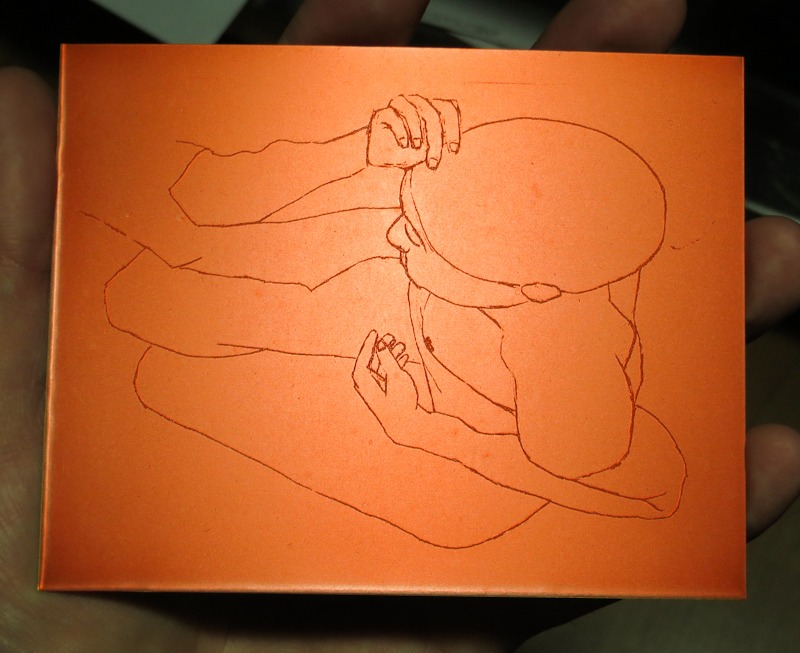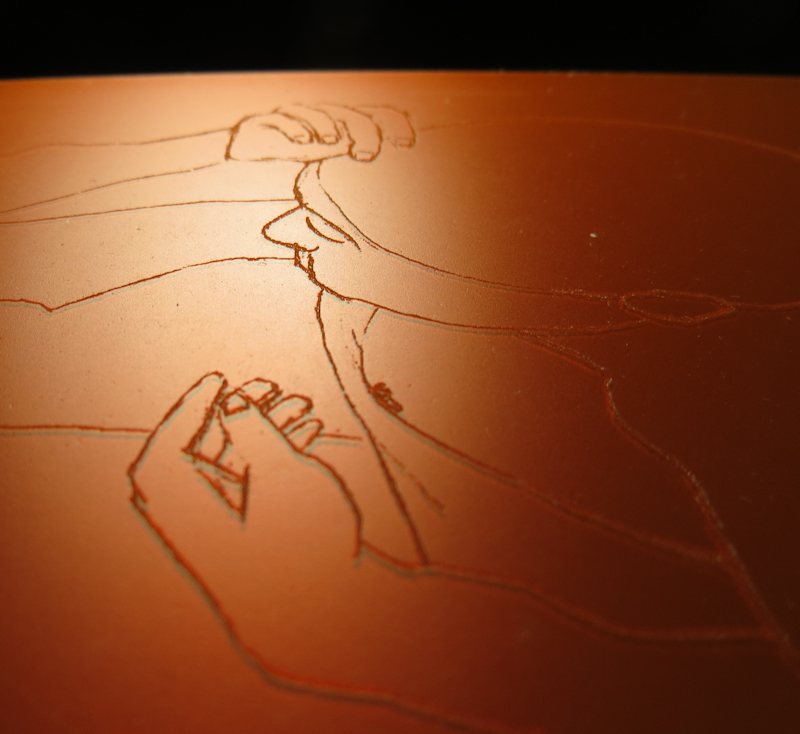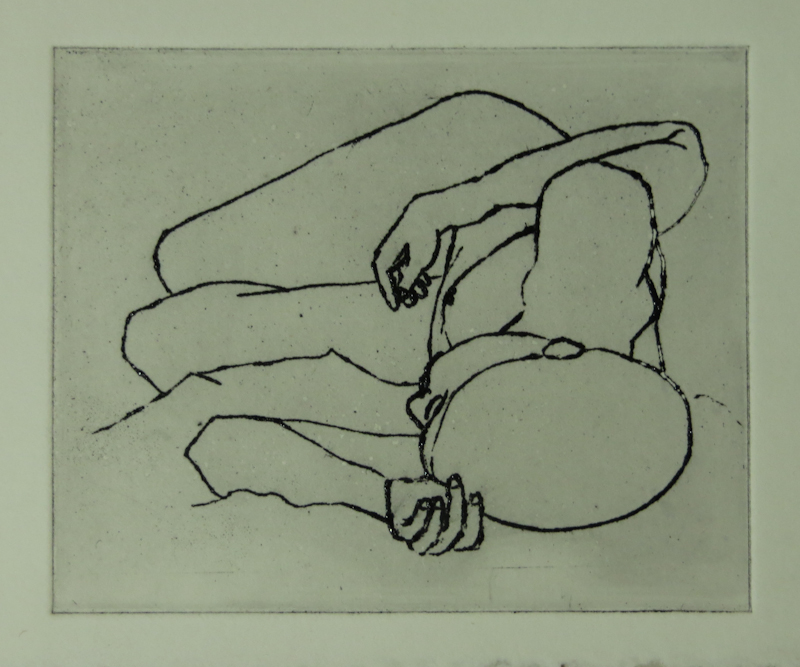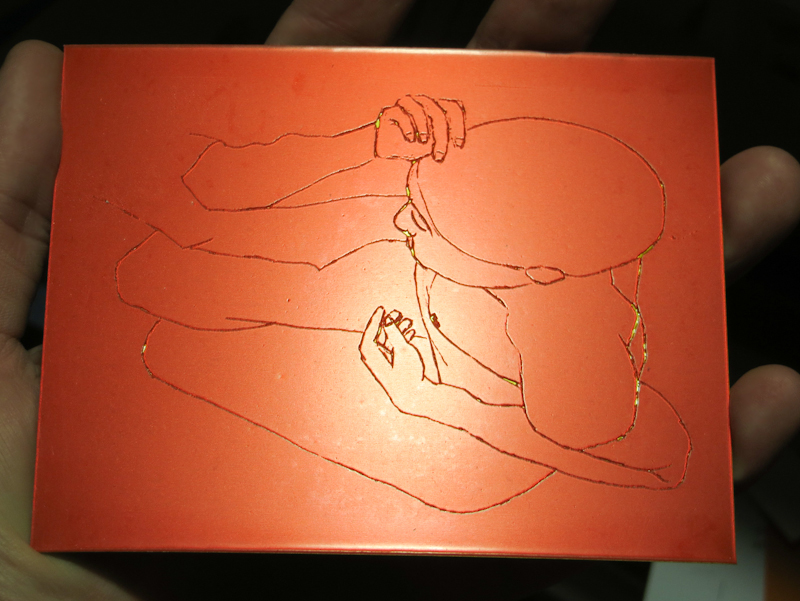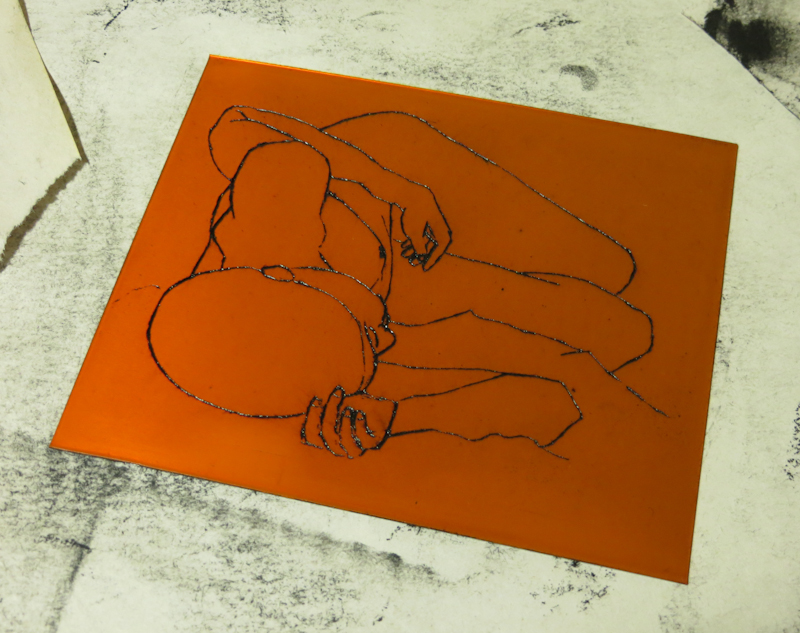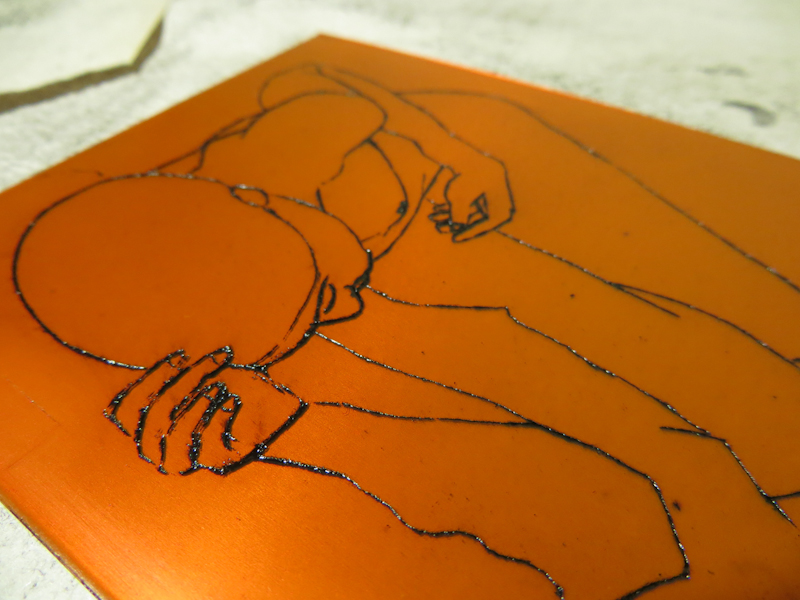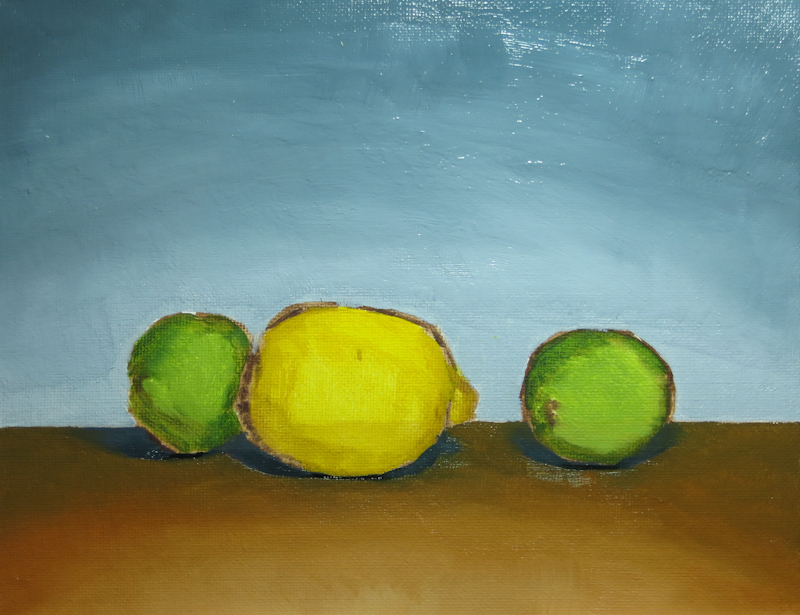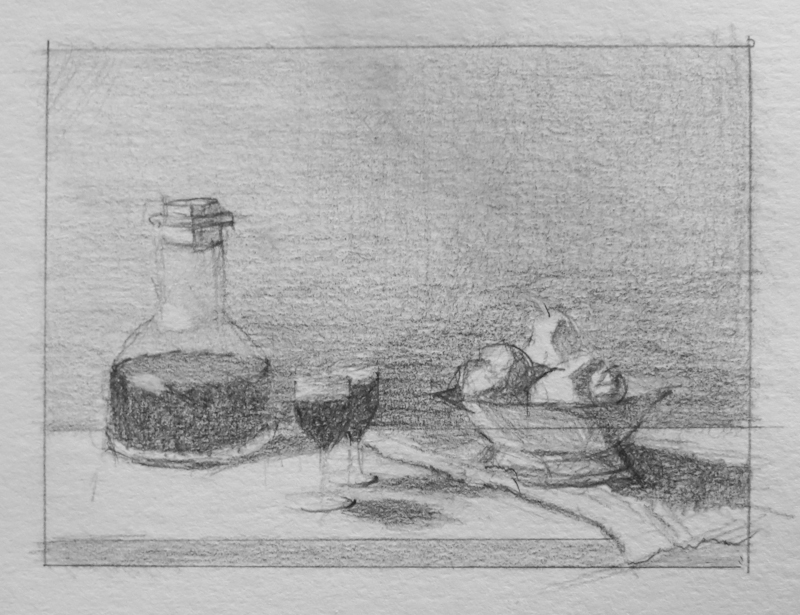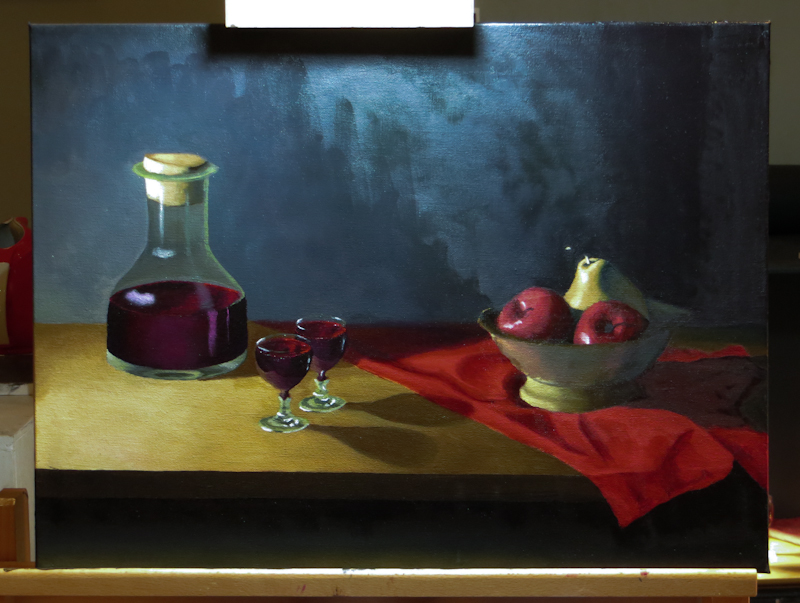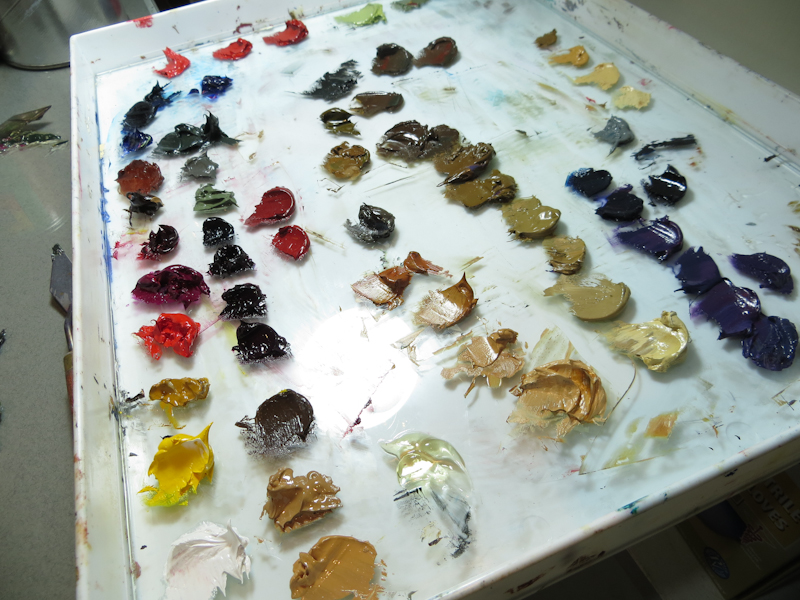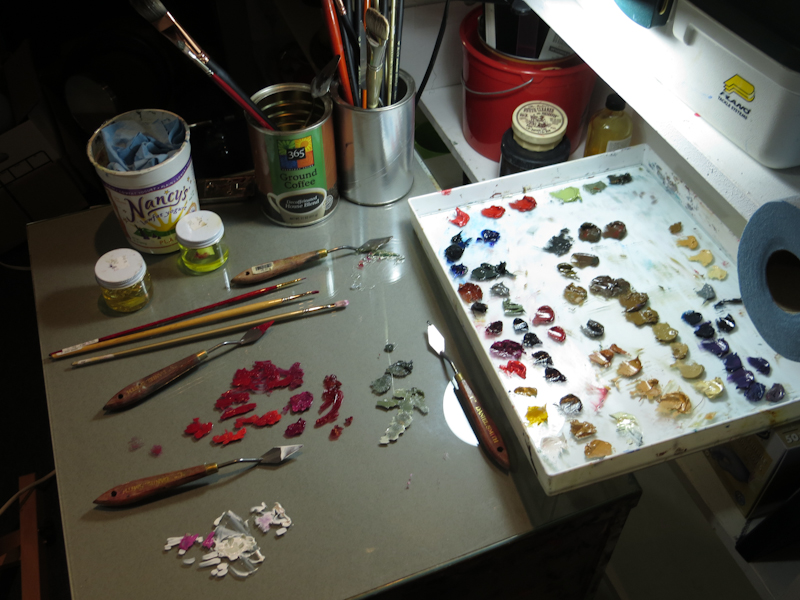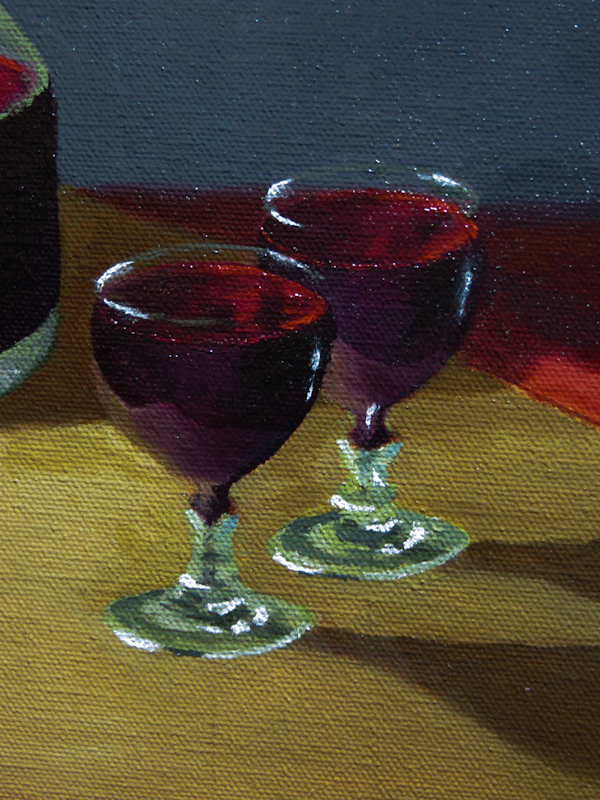Today I started on a new painting! Gary wants me to shoot for four paintings over the next month, so I am focusing on smaller sizes and simpler, less diverse subject matter. The idea is that I will learn more in a month from four simple paintings than an entire quarter spent on a one large and complex painting. This first study is on an 8″x10″ canvas panel.

Here’s the tableau. After months of intense chiaroscuro, I wanted to do something high key with a lot of bright happy colors. Gary suggested citrus fruits since they don’t spoil too quickly and are fun to paint.

I did my initial drawing with a brush, using Burnt Umber diluted with Gamsol. My goal in using the brush, instead of charcoal, was to learn to draw directly in paint.
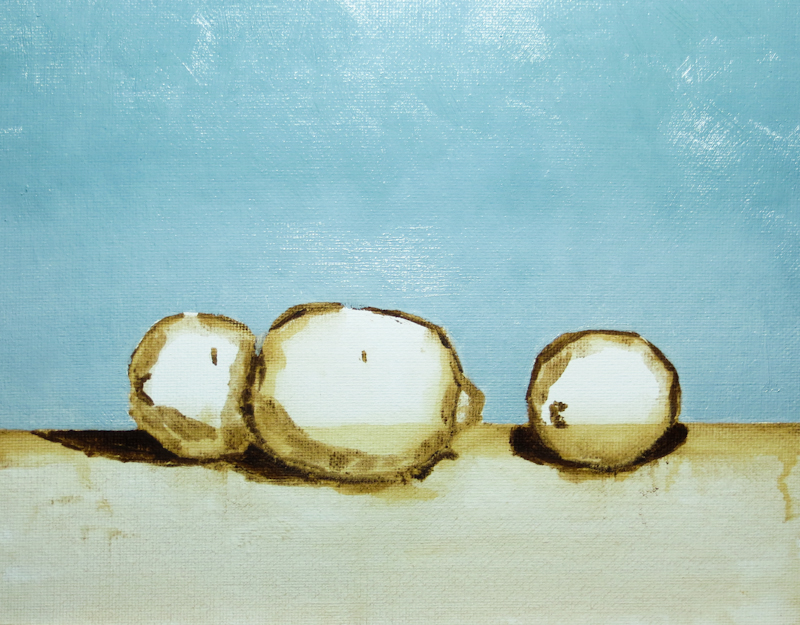
The background is a mixture of French Ultramarine, Cadmium Orange, Cadmium Yellow, and Titanium White. I think I did a pretty good job matching the color.
Here’s the painting at the end of the first session. It reminds me of a Cezanne because of the dark outlines around the fruit. Although I like Cezanne, my intention is to cover the dark outlines when I paint over the placeholder colors on the fruit.
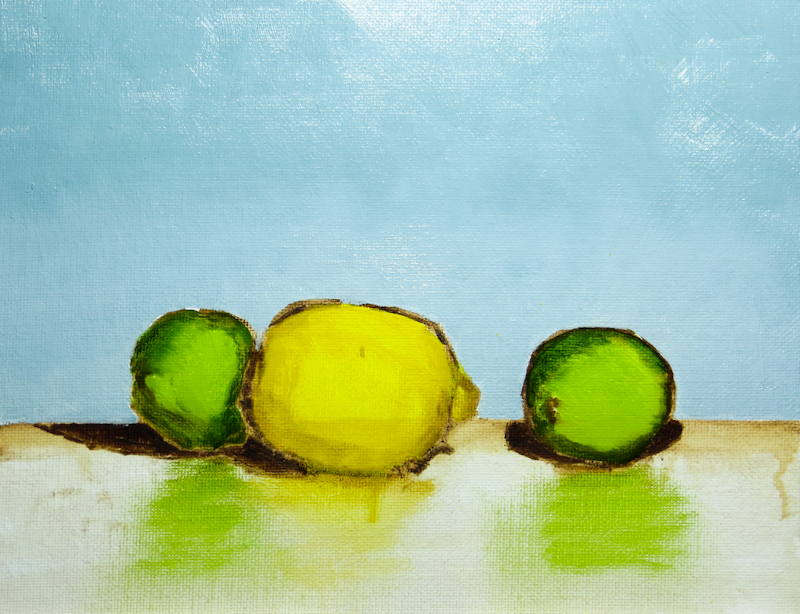
Before leaving for the day, I took 5 minutes to quickly brush in some diluted placeholder colors in order to get an idea of how the image was coming together. I used Cadmium Yellow Medium for the lemon and a mixture of Sap Green, French Ultramarine, and Cadmium Yellow Medium for the limes.
